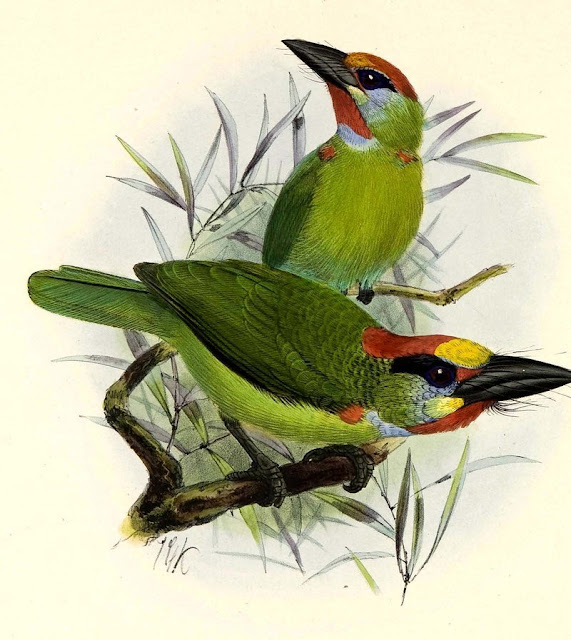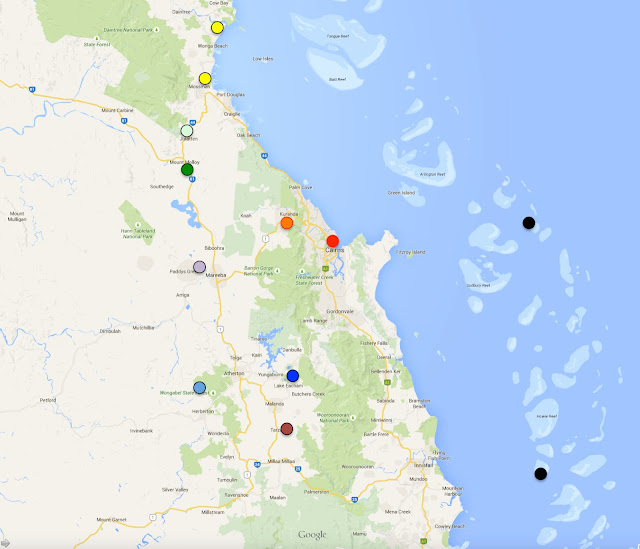Nesting behaviour of Red-throated Barbets

Depiction of Red-throated Barbets (female, at rear, is not correctly portrayed)) Barbets are included in the Order Picoformes which is made up of the woodpecker family Picidae plus 8 other families. It includes Puffbirds, Barbets, Toucans, Piculets and Woodpeckers. In general Picoformes are insectivorous but a minority eat mostly fruit. Nearly all Picoformes have parrot-like feet; two toes forward and two back, an arrangement that is advantageous for birds that spend most of their time on tree trunks. Picoformes do not have downy feathers at any stage with true feathers at all stages. All nest in cavities. The related Common Flameback Woodpecker (male) The related Common Flameback Woodpecker (female) Battle of the Picoformes; A Lineated Barbet and a Streak-breasted Woodpecker fight over a nest hole Barbets consist of 83 species, 5 of which are threatened. are tropical birds originally designated in the family Capitodinae (see modification below). Barbets are
